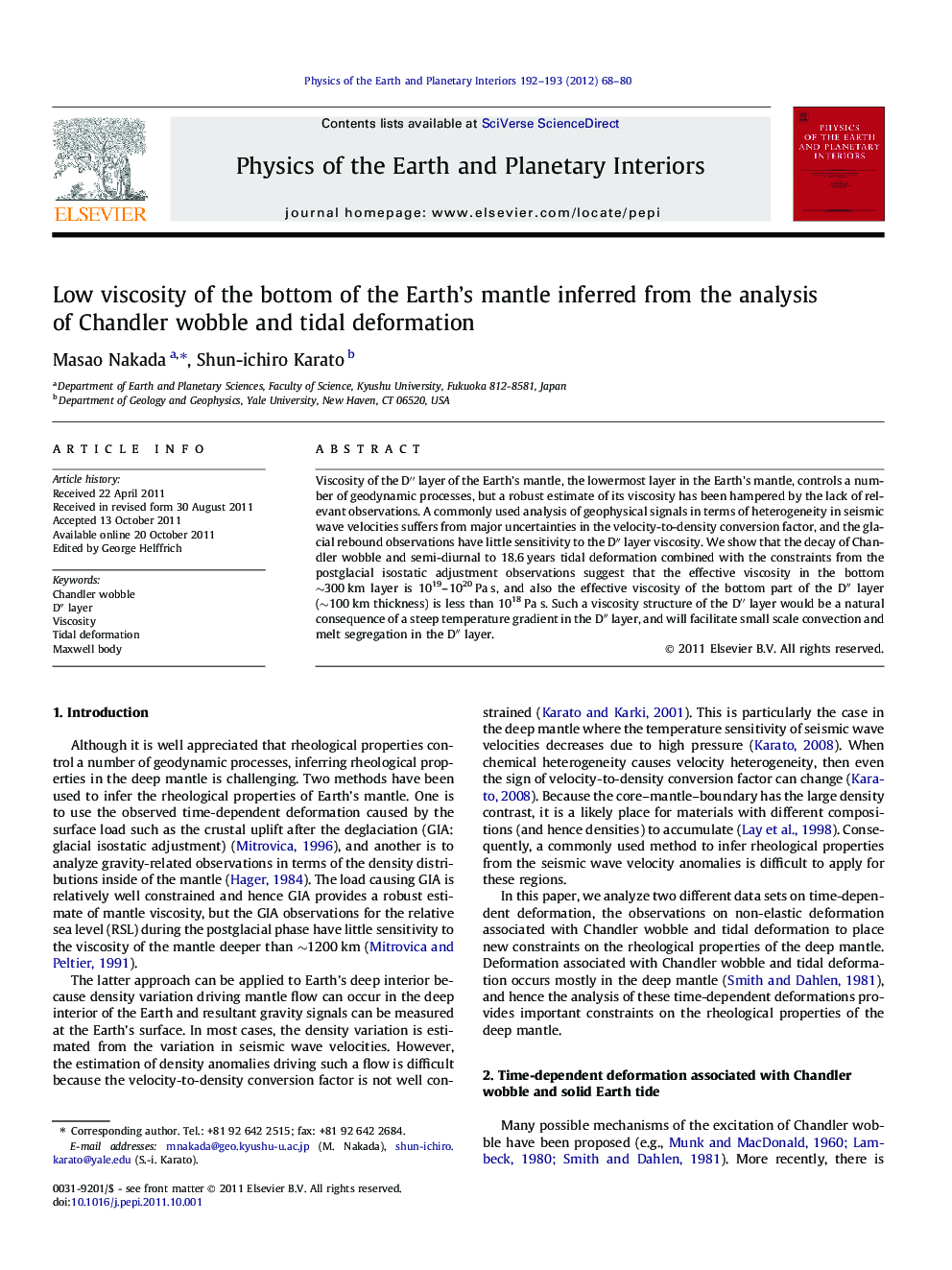| کد مقاله | کد نشریه | سال انتشار | مقاله انگلیسی | نسخه تمام متن |
|---|---|---|---|---|
| 4741860 | 1641538 | 2012 | 13 صفحه PDF | دانلود رایگان |

Viscosity of the D″ layer of the Earth’s mantle, the lowermost layer in the Earth’s mantle, controls a number of geodynamic processes, but a robust estimate of its viscosity has been hampered by the lack of relevant observations. A commonly used analysis of geophysical signals in terms of heterogeneity in seismic wave velocities suffers from major uncertainties in the velocity-to-density conversion factor, and the glacial rebound observations have little sensitivity to the D″ layer viscosity. We show that the decay of Chandler wobble and semi-diurnal to 18.6 years tidal deformation combined with the constraints from the postglacial isostatic adjustment observations suggest that the effective viscosity in the bottom ∼300 km layer is 1019–1020 Pa s, and also the effective viscosity of the bottom part of the D″ layer (∼100 km thickness) is less than 1018 Pa s. Such a viscosity structure of the D″ layer would be a natural consequence of a steep temperature gradient in the D″ layer, and will facilitate small scale convection and melt segregation in the D″ layer.
► We examine the decay time of Chandler wobble and tidal deformation.
► We show that these provide a strong constraint on the viscosity of D″ layer.
► We examine the viscosity of the D″ layer of the Earth’s mantle.
► We found that the effective viscosity of the D″ layer is1019–1020 Pa s.
Journal: Physics of the Earth and Planetary Interiors - Volumes 192–193, February 2012, Pages 68–80